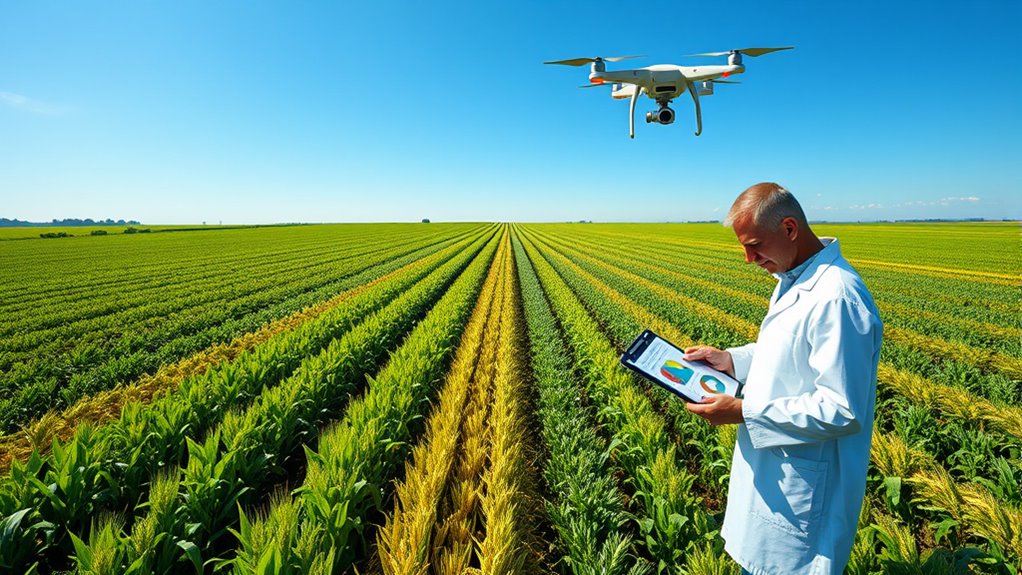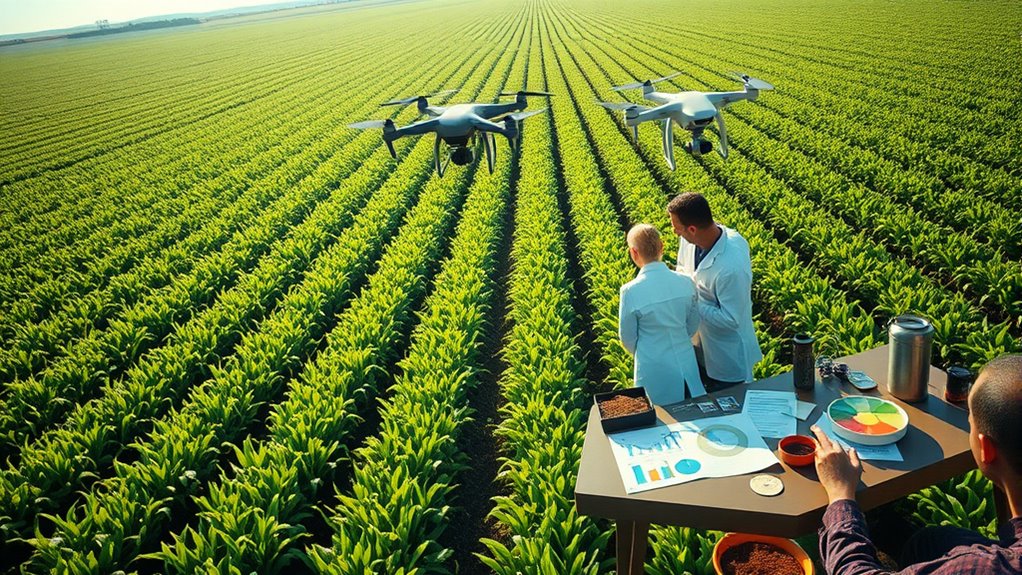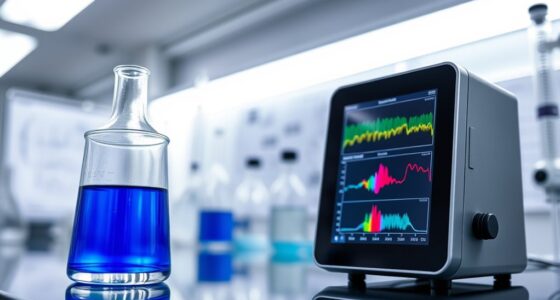Agricultural statistics are essential for analyzing crop yields and evaluating farming practices. They help you understand how technological innovations like precision farming and pest management impact productivity. By examining data on soil health, weather, and pest control, you can optimize resources and improve crop outcomes. These insights inform decisions that boost efficiency and sustainability. Continuing with this information will reveal how data-driven strategies are shaping the future of agriculture and food security.
Key Takeaways
- Agricultural statistics analyze crop yields to evaluate the impact of technological advancements like precision farming and drone surveillance.
- Data collection on pest management effectiveness helps identify key pests affecting crop productivity and optimize control strategies.
- Statistical models incorporate weather, soil, and pest data to forecast future crop yields and support food security planning.
- Research uses agricultural statistics to link technological innovations with increased productivity and sustainable farming practices.
- Real-time data and analysis enable farmers and policymakers to make informed decisions for resilient and efficient agricultural systems.

Farming technology has revolutionized how crops are grown, monitored, and harvested. Advanced machinery, drone surveillance, and sensor systems now allow farmers to collect real-time data about soil health, moisture levels, and crop growth stages. When analyzing agricultural statistics, this data helps identify trends in yield increases attributable to specific technological interventions. For example, precision agriculture tools enable targeted fertilization and irrigation, leading to better resource use and higher yields. As a result, policymakers rely on these statistics to support investments in new technologies that have proven their effectiveness, fostering more sustainable and efficient farming systems. Technological innovations continue to shape the future of agriculture by providing new ways to optimize productivity and sustainability.
Pest management remains a vital factor in crop research and yield optimization. Effective pest control measures directly influence crop health and productivity, which are meticulously tracked through agricultural statistics. By analyzing pest infestation rates alongside yield data, researchers can pinpoint the most damaging pests and evaluate the success of various pest management strategies. Integrated pest management (IPM) practices, combining biological controls, resistant crop varieties, and judicious pesticide use, are often assessed through statistical models to determine their impact on crop health and overall production. These insights help farmers refine their pest control approaches, reducing crop losses and minimizing environmental impacts.
Collecting and analyzing such detailed data isn’t just about understanding current conditions; it’s about predicting future outcomes. Statistical models incorporate variables like weather patterns, soil conditions, farming practices, and pest pressures to forecast potential yields. Policymakers depend on these predictions to plan for food security, allocate resources, and develop policies that support resilient agricultural systems. When farming technology improves pest management, it becomes easier to sustain high yields even under challenging environmental conditions.
In essence, agricultural statistics serve as a bridge between research and practical application. They help you understand how innovations in farming technology and pest management influence crop productivity. With this knowledge, you can make smarter decisions—whether you’re a farmer optimizing your practices or a policymaker shaping agricultural policies—to ensure a productive, sustainable future for agriculture.
Frequently Asked Questions
How Can Farmers Access Real-Time Crop Yield Data?
You can access real-time crop yield data by using remote sensors installed in your fields that monitor crop conditions continuously. These sensors transmit data to user-friendly data platforms accessible via smartphones or computers. By regularly checking these platforms, you get up-to-date insights on crop health and yields, allowing you to make timely decisions. This technology helps optimize your farming practices and boosts productivity effectively.
What Are the Main Challenges in Collecting Agricultural Statistics?
You face an enormous challenge in collecting agricultural statistics, as data accuracy and consistency can seem like trying to tame a wild beast. Variations in reporting methods, seasonal changes, and unpredictable weather make it nearly impossible to gather perfect data. These hurdles threaten the reliability of your information, making it difficult to make informed decisions. Overcoming these challenges requires robust systems and vigilant oversight to guarantee trustworthy, consistent data.
How Does Climate Change Impact Crop Yield Predictions?
Climate variability makes it harder for you to accurately predict crop yields because unpredictable weather patterns, like droughts or floods, disrupt growth cycles. As a result, you may see less reliable yield forecasting, which complicates planning and resource allocation. You need to account for these changing conditions in your models to improve accuracy, ensuring better preparedness for future climate impacts on crop production.
What Innovative Technologies Are Used in Crop Research Analysis?
You use innovative technologies like precision farming and drone monitoring to enhance crop research analysis. Precision farming employs GPS and IoT sensors to optimize inputs, boosting yields and reducing waste. Drone monitoring provides real-time aerial images, helping you assess crop health, identify issues early, and make informed decisions. These tools together improve accuracy, efficiency, and sustainability in crop research, ensuring better yields and resource management.
How Reliable Are Current Agricultural Statistical Models?
You can trust current agricultural statistical models to a significant extent, as they focus on data accuracy and model robustness. These models are continuously refined with updated data and advanced algorithms, ensuring reliable predictions and insights. While no model is perfect, ongoing improvements help you make informed decisions, optimize crop yields, and manage resources effectively. Always consider validating models with local data for the best results.
Conclusion
As you reflect on these agricultural insights, remember that behind every ripe harvest lies a delicate dance of effort and patience. The data paints a promising picture, gently guiding you through fields of potential. With careful attention and nurturing, you’ll find that each season’s yield offers a subtle promise of growth and prosperity. Embrace these statistics as a gentle breeze, inspiring confidence in your journey toward bountiful, flourishing crops.










